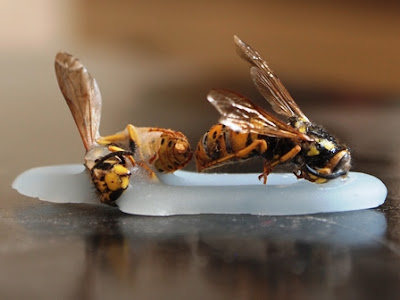I suppose it is only fair that I tell this story. I mean, I would be really critical if I caught someone else with their pants down like mine were, so I'd better admit my own short-comings. It was like this: I went to pick up the girls at church last Sunday. They go to one of these california-seeker-sensitive places that is full of gangster-looking punks and Harley guys. I can't stand the place. But, the main point is that the church doesn't have a regular order of worship, so they might finish at 11:00 or 11:30 or noon or anytime. When I go to pick them up, I bring something to read and sit in the car waiting, sometimes for a long time.
Anyway, last week I was playing a CD on the car radio and I left it playing while I waited for the service to end. In order to have the radio on, I had the key turned. It might have been turned far enough for the headlights to come on, I don't know. (The car has automatic headlights. When you turn the key, they come on. It is kind of annoying, but I understand that we live in a nanny state now, ain't nobody expected to take care of their own business.) In any case, whether the lights were on or just the radio, it shouldn't have mattered because I didn't have to wait very long. It was probably 10 minutes that I sat there with the key turned—not long enough to kill a decent car battery.
When the girls got in the car, however, it wouldn't start. It wasn't getting enough of a shot from the battery. The starter would tick a little, but it wasn't enough to turn it. I popped the hood and took a look. I think the battery was probably fine, but the terminals and posts were obviously corroded. You know how they'll develop a thick green layer of semi-dry, battery-acid looking crust? Well, that is what we had. With the battery drained down a little, and the corrosion pretty thick, there just wasn't enough juice getting to the starter to kick it over.
How does that Billy Joe Shaver song go? "I got a good christian raisin'/and an eighth-grade education/I wasn't born no yesterday." Well, I've surely dealt with this little problem before. All it takes is a wrench and a wire brush: You pull the terminals off, scrub the corrosion off the posts, clean up the terminals, put it all back together, and, bingo, two minutes later you're on the highway. Well, and this is where things started getting bad: I suddenly realized that all my tools were in the Chev . . . back home in the driveway. I always carry a toolbox, and a bunch of other stuff, like jumper cables, tow straps, and a can of fix-a-flat. (The fix-a-flat really saved our bacon in the middle of the San Rafael Swell one time. We were about 50 miles from Green River on the gravel when we got two flats at once. The spare went on one and the fix-a-flat went in the other. It probably saved us a week of shooting flares at passing airliners.) We've had the car for most of a year now, but somehow I'd never stocked it with the basics. There was not one tool in the car. Not one.
This was the point at which things went from bad to worse. I reached for the pliers that I always carry in my pocket, but they weren't there. For some reason I'd left the house without them. I had my pocket-knife, of course, but that was it. I was reduced to begging the girls to look through their purses for a pair of tweezers or something. I'm not kidding. It was desperate times. I started imaging what it would be like to spend a week living in that crumby church parking lot. Then, just as I started really worrying about it, we were rescued.
It was awful. It really was. One of these Harley guys had left the motorcycle at home, so he pulled over next to us with his pick-up truck. Out came his little tool kit. It had jumper cables, pliers, a week's worth of rations, everything. It was terrible. While we hooked up the jumper cables, he sort of lectured me on what I should do. I'm not kidding. Here was Rural Ways standing in a suburban parking lot getting a speech from a california-harley-guy about how to keep my battery posts clean. I couldn't say anything. I mean, he was right. My pants were down around my ankles (figuratively speaking) and I had been reduced to begging. I just kept my head down and agreed with everything he said. Fortunately, the instant we put his cables on our battery the car started.
We beat a hasty retreat. I practically ran the guy over just trying to get out of there. I drove straight home, grabbed the wrenches, pulled the terminals, cleaned up the posts, and got the whole thing back put back in operational order. Since then, I've gone through all my tools and built a little care package: cables, tow strap, channel-locks, screw-drivers, a flashlight. You know, the basics. We might need help again someday, but it won't be because I am standing there empty-handed wondering how long it is going to take me to walk home.













































